His “Hole N’ the Rock home was a great achievement…
But Albert had even bigger dreams to chase.
Albert Christensen loved stone, Jesus and Franklin Roosevelt. He was an artist from the time of his birth and was driven by an almost primal need to express himself. He created his own kingdom at “Hole n’ the Rock, a few miles south of Moab and filled it with his inspirations. A tour of Christensen’s famous home today is an exploration of his art and his passions; his many renderings of Franklin Roosevelt and Jesus are everywhere, in oils and acrylics and watercolor, but it almost seems as if Albert was searching for a grander way to express himself. That he felt he just hadn’t got it right yet.
The medium he needed, he would soon discover, was all around him.
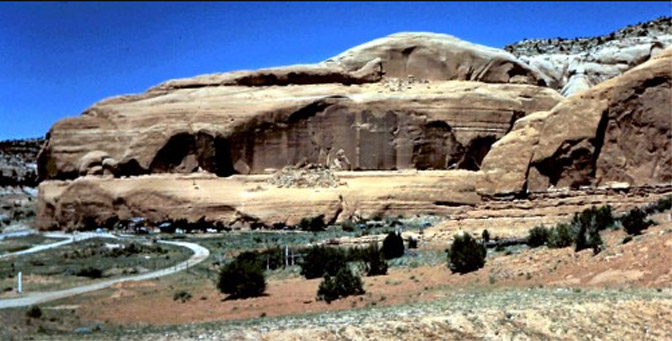
Albert Christensen was a native Utahan, whose love for art, and especially sculpture, not only defined his passion but ultimately broke his heart. In the 1930s, his family moved 40 miles north from Monticello, to a parcel of land the family had purchased years earlier, near Cane Springs. Iit was here that the Christensens made their home.
During the Great Depression, they tried to augment their meager earnings by bootlegging liquor; eventually they were caught, but somehow only Albert did hard time for his ‘crimes.’
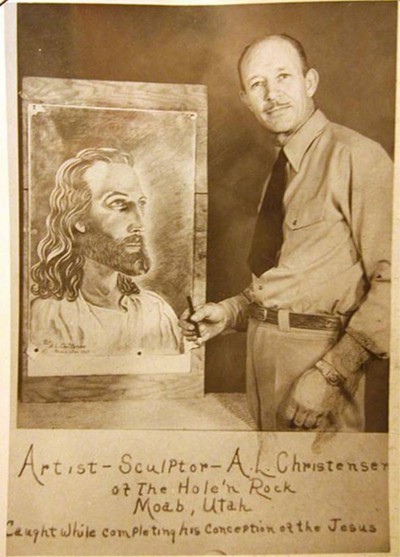
Upon his return, Albert took an interest in art—in oil paints and in sculpture. After all, he was surrounded by some of the most extraordinary sandstone in the world. His father had shown him how the softer rock could be blasted out and excavated. In fact, as a boy his father had created a summer room for his boys, using dynamite and chisels. Albert took his father’s rudimentary work and made something remarkable
***
This part of the Hole “ the Rock story is purely speculative. But in 1935, there was another artist in the area. In fact, he carved his initials on the sandstone wall adjacent to the Hole N’ the Rock museum and shop.. He called himself ‘Aaron Andrew,’ or ‘Ahrron Andeew,’ or simply, ‘King America/King World.’ Aaron was an eccentric artist who dressed oddly, created copper ‘medals’ that he wore on a chain over his tattered great coat, and who was often seen marching up and down Main Street on Sunday mornings, as if on patrol.
Very little of this man was known until author and historian Jen Quintano’s incredible research answered many of the questions we had all pondered for decades. Rather than try to summarize her discoveries, it’s best to get the information directly from Jen. Her two part series appeared in The Zephyr, in consecutive issues during the spring and summer of 2020. Her story was called:
FROM GENOCIDE SURVIVOR TO KING OF THE WORLD…AN UPDATE ON THE AAHRON ANDREW MYSTERY—
By Jen Quintano Part 1 and Part 2
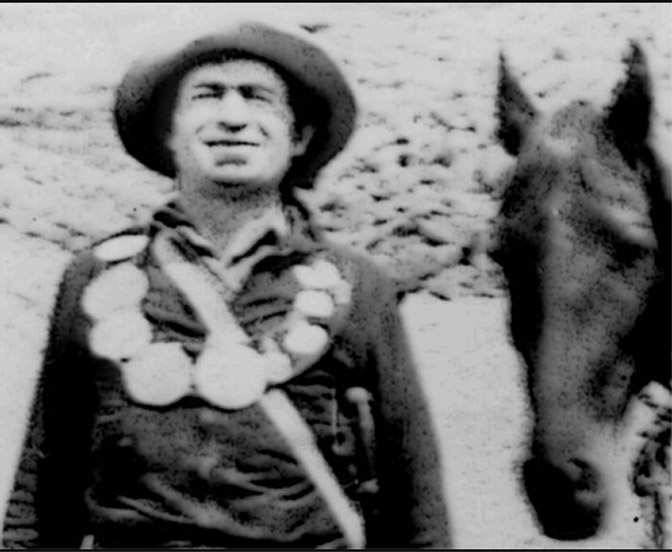
Andrew’s story is heartbreaking. Quintano discovered that his real name was “Aharon Andrikian and that he was born in1877 in Malatya, a town in present-day Turkey at the base of the Taurus Mountains.” He had come to America years earlier, but eventually began to wander west. He left his mark for the world to see on the broken sandstone ledges, just north of Moab, just a stone’s throw from the old ranch house (now Moab Springs Resort). On the vertical face of a large boulder, Andeew found the perfect canvas for his hammer and chisel. He created an extraordinary relief rendering of a man in full military regalia. He sits in profile astride his magnificent horse. The detail is amazing—upon his cossack hat, he intricately depicts a map of the northern hemisphere; even the buttons on his coat are shaped like small globes. And on the flat stone surface between the horse’s head and Andeew’s is this strange inscription:
M.C.F. HHAESUSS
AMERICA
AHARRON
ANDEEW
KING AMERICA
KING WORLD
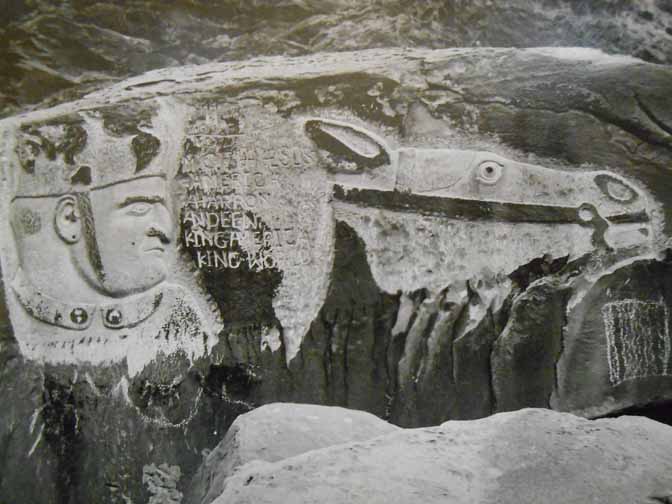
Eventually Andrew (Andrikian) was forced out of Moab for being a public nuisance, and what happened in the years to come is painful to read. But again, this is Jen Quintanos story to tell. So again click here and here to learn more about the King of the World and his tragic life.
But is it possible that the passions and talents of Christensen and Andrikian are somehow entwined? Could they have met? Did they know each other? It’s possible…
More than a decade ago, I stopped at ‘Hole ‘n’ the Rock’ to photograph some of the historic inscriptions that can be found just west of the main entrance to Albert Christensen’s old home. Several recognizable names can be found, including ‘Loren Taylor,’ the longtime publisher of the Moab Times-Independent and Sam Taylor’s father. (This was the subject of a Zephyr Blue Moon Extra a couple weeks ago, and why I felt the need to repost this modified version of the Hole n’ the Rock story from many years ago.)
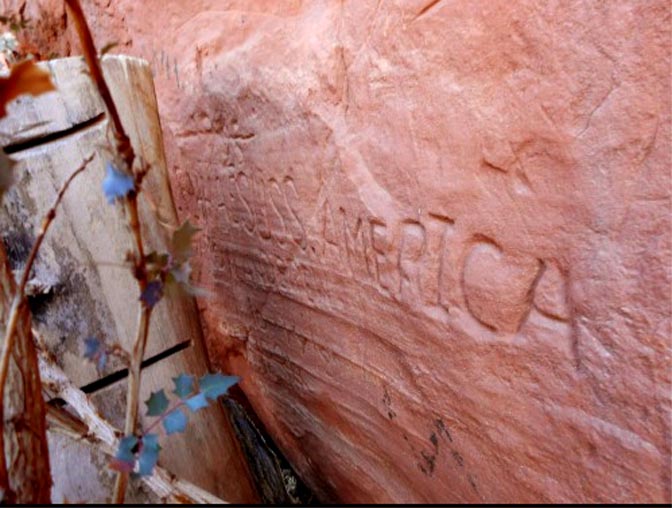
But as I walked the wall, looking for and recording the graffiti, I could barely see a partial inscription, obscured by a thicket of desert holly. Trying to read the words proved to be difficult but finally, I could see the deeply carved letters and realized I’d seen them before, in a very different location. It was another work by Ahrron Andeew. There was no bas relief art included there, but his name and self designations were obviously his. Is it just coincidence that the immigrant who would in the next few months create his masterpiece in Moab, left his name at Christensen’s homestead? Did he and Albert discuss the art of sandstone sculpture? During the summer of 1935, it was only a 13 mile journey for the Christensens to purchase supplies. Did Albert hear about this man who was carving out a magnificent sculpture of his own. And did it inspire Albert to try his own hand at bas relief?
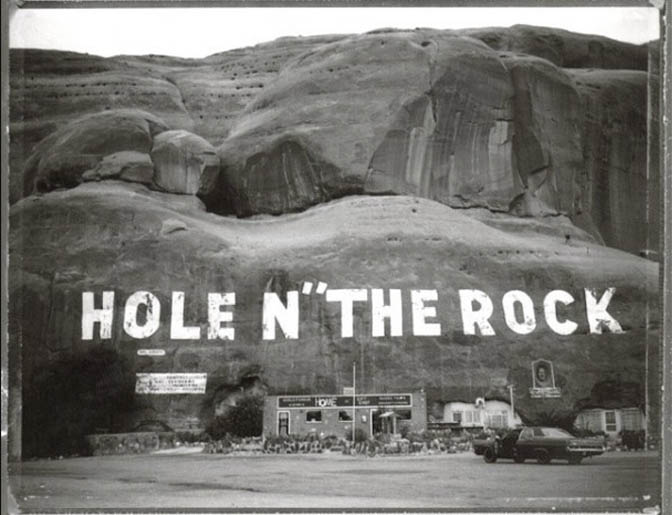
Beginning in the late 1930s and for the next 12 years, Christensen would create his remarkable 5000 square foot home—his ‘Hole ‘n’ the Rock—from the surrounding Entrada Sandstone. And for many years, from 1945 to 1955, part of the man made cavern was a diner. It had a reputation for being a bit on the wild side. Though Hole N’ the Rock was in San Juan County, it was almost 40 miles from Monticello, the nearest community in the county. Moab was much closer, but Grand County lacked jurisdiction. The diner and the store and its reputation flourished and the Christensens eked out a modest living.
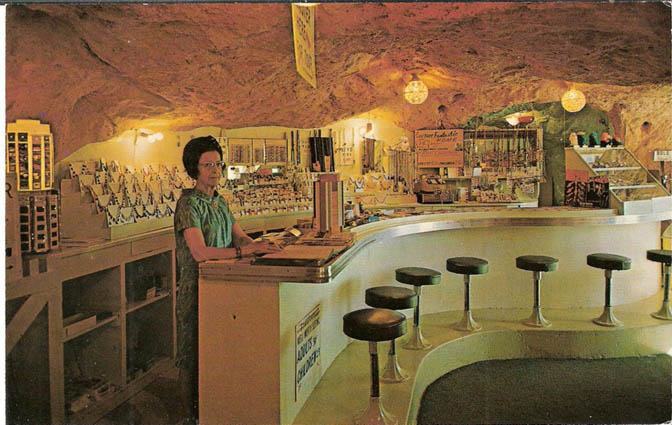
Still, Albert’s most impassioned work, and the project that was to first create such excitement and interest, and then later cause such profound disappointment and heartbreak, was his ‘Unity Monument.’
It was to be Albert Christensen’s grandiose effort to honor President Franklin Roosevelt and his opponent, Republican Wendell Willkie in the 1940 presidential election. He planned a massive bas relief tribute in a sandstone amphitheater near his rock home, but the federal government claimed he’d built his scale model on public land…What the government did next would devastate Albert, his family, and many of Moab’s citizens.
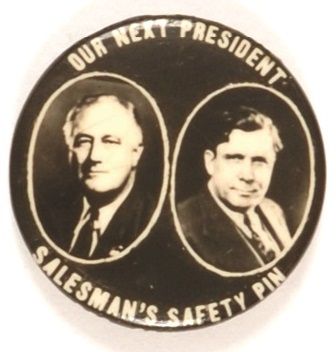
In the summer of 1940, all of Europe was at war. The Nazi Blitzkrieg had overwhelmed France and most of western Europe by June. The swastika of Hitler’s Third Reich flew over the capitals of Belgium, Holland, Norway and Sweden. Now Britain’s Royal Air Force fought a desperate battle for the skies above the English Channel with Goerring’s Luftwaffe. Prime Minister Churchill turned to the United States and President Roosevelt for help. Roosevelt knew England’s survival hung in the balance and was determined to do all he could to save.
But FDR faced a crisis of his own at home. His second term as president was fast coming to a close and no president had ever run for a third. There was nothing in the Constitution to prevent it, but it was a tradition with roots as far back as Washington, who strongly believed eight years were long enough for one man to serve.
Roosevelt was inclined to agree. “All that is in me longs to return to my home on the Hudson, ” FDR lamented. But a growing isolationist movement across America worried the president. Roosevelt was convinced that a Republican presidential victory would not only spell disaster for Great Britain, but ultimately catastrophe for the United States as well. Roosevelt broke with tradition and tossed his hat into the Third Term ring.
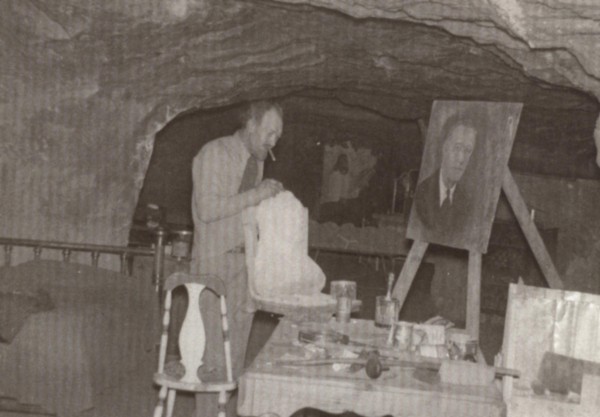
At the Republican convention in Philadelphia, Governor Tom Dewey and Senator Robert Taft battled fiercely for the nomination. But on the sixth ballot, the delegates abandoned the favorites and turned to the dark horse candidate, Wendell L. Willkie.
Willkie wasn’t much of a back room politician; he wasn’t, in fact, much of a politician at all. Until recently, he was a registered Democrat. Throughout the campaign, the Republicans waged a bitter campaign against FDR, but Willkie preferred the high road and often distanced himself from the rhetoric that came from his own party. On election night, Roosevelt prevailed, though by a much smaller margin than his 1936 landslide and Willkie, gracious as always, conceded, FDR “is still the champ.” After the election, and with a new mandate from the people, FDR pursued new ways to assist the besieged Britains. On December 16, 1940, he introduced legislation to the Congress—HB 1776. Roosevelt called it Lend Lease. In exchange for armaments, Britain would give the U.S. long term leases on British-held islands in the Atlantic.
The bill was controversial and faced stiff opposition in the Congress, but Willkie testified on its behalf. “It is the history of democracy,” he said, “that under dire circumstances, extraordinary powers must be granted to the elected executive.” Willkie’s support insured Lend Lease’s passage. Later, FDR sent him to England to analyze the benefits.
None of this was lost on Albert Christensen. Two thousand miles away, in the remote red rock deserts of southeast Utah, he took note of both men’s patriotism and honor. His devotion to FDR was already well known; now he wanted to honor Willkie as well. Later he would write, “The more I thought of this hard fought battle by these two Great Politicians, the more of a great story it became and the more eager I became to make this Concrete History for posterity’s sake. Why? Because, had anything such as this taken place in any other country other than the United States, I am convinced that one of these men would have been assassinated, or perhaps both of them. And that, to me, expresses our American Unity. An Expression of our Unity by two great leaders should have been brought to the attention of our youth…”
The notion that FDR’s adversary would rally to the side of the man who defeated him touched Christensen deeply. And so he was determined to pay tribute to FDR and Willkie in a way he deemed worthy. Albert turned to the magnificent sandstone cliffs that surrounded him.
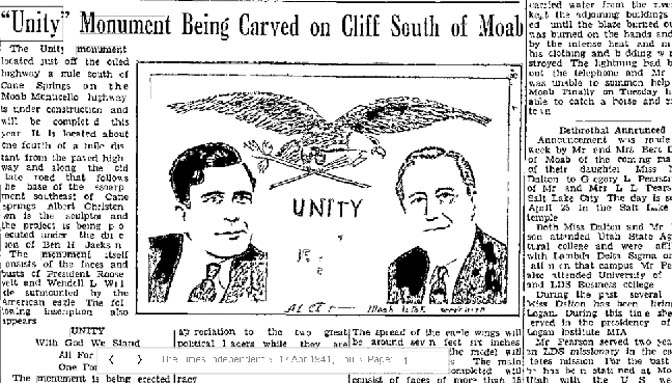
In the April 17, 1941 edition of the Times-Independent, a front page story carried the details of Christensen’s project.
The Unity Monument, located just off the oiled highway a mile south of Cane Springs on the Moab-Monticello highway, is under construction and will be completed this year…Albert Christensen is the sculptor and the sculpture is being prosecuted under the direction of Ben H. Jackson.
The monument itself consists of the busts of President Franklin Roosevelt and Wendell Willkie, surrounded by the American Eagle. The following inscription also appears:
UNITY
With God We Stand
All For One
One For All
The monument is being erected, according to the sponsors, in honor of these two leaders of America for the example they are setting for our people in the way of unity and preservation of American rights and liberties. Those behind the project feel that it is right and fitting that the American people should show appreciation to the two great political leaders while they are alive for the effort they are making to safeguard American democracy.
The work of the monument is being carried on by popular subscription and the ground upon which it rests has been turned over to the Department of Interior for maintenance upon its completion.
Christensen’s plans were “monumental,” to be sure. The final version, what Albert himself called “colossal,” was to be built on a massive sandstone wall in an alcove about a mile north of Hole n’ the Rock. According to the Times-Independent story, it would be “located so that 100,000 people could easily gather in a natural amphitheater below and in front of it.”
He set out to remove thousands of tons of rock and debris from the cliff face where the Unity Monument’s Colossal would be carved. The project, when finished, would feature 15 foot wide likenesses of Roosevelt and Willkie. The eagle would embrace both of them and measure 45 feet from wingtip to wingtip. Near the site of the final carving, Christensen went to work on a 1:6 scale model. By May it was almost complete.
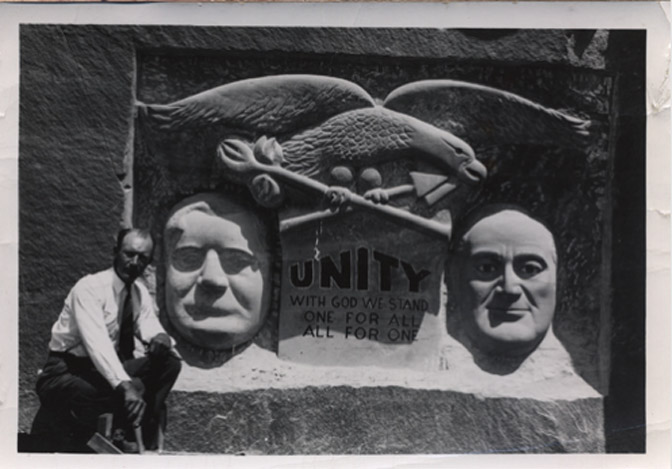
Christensen’s enthusiasm was contagious. Soon Moabites were making the 15 mile drive to the site to check Albert’s progress. And in late April, a group of Moab’s most prominent citizens invited Willkie to attend dedication ceremonies at the Unity Monument, tentatively scheduled for May 24, 1941. In part they wrote…
“We wonder if it would be possible for you to be present and speak to this great western group of people who will be gathered in this vast natural amphitheater at the base of the monument. It will be an opportunity for the advancement of ideas of true patriotism, genuine unity of democratic peoples, whether American or British, and the holding of the torch of liberty and the principles for which this country has stood and defended in both peace and war.
“We covet for you this great single opportunity to present these cherished standards.”
The letter was signed by 18 Moab citizens, including Mayor D.E. Baldwin, Bish Taylor, publisher of the T-I, Sheriff J.B. Skewes, and LDS bishop W.R. McConkie.
However, there is no evidence that Willkie ever replied. And then, Albert Christensen’s dreams were blown to bits.
*****
On August 28, 1941, just four months after Christensen’s plan was revealed, another Times-Independent article chronicled its startling and sudden demise. The headline, “Unity Monument Passes Into History,” hardly prepared the reader for the bizarre story that followed…
The Unity Monument near Cane Springs…has been ‘obliterated.’ N.F. Waddell, special agent in charge of the U.S. Division of Investigations, reported last week in Salt Lake City.
Mr. Waddell, who explained that the Department of Interior had done the obliterating, commented that ‘some of the work was wrong.’ ‘I believe the eagle was facing the wrong way,’ he remarked. The special agent said the monument, destroyed several weeks ago, had already been damaged by someone before the Department of Interior stepped in.
The monument, intended as a gift to the U.S. Department of Grazing, reportedly had the sponsorship of the Department of Interior earlier this year. In explaining the ‘obliteration,’ Mr. Waddell remarked that his department ‘has certain rules. We don’t give out much information.’
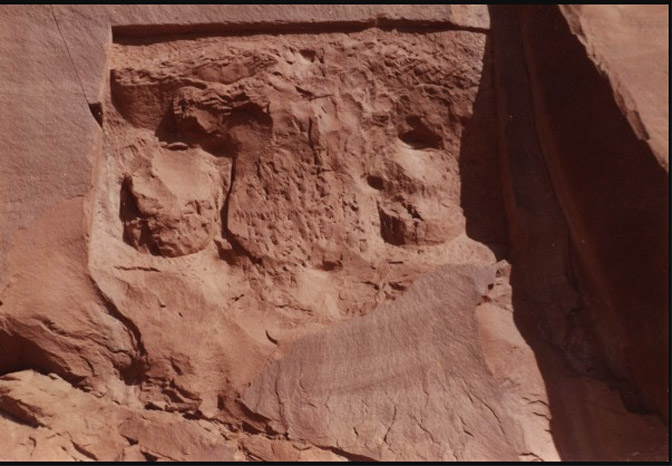
With that strange account, the Unity Monument disappeared from the pages of the Times-Independent. But Albert Christensen would not forget. Christensen was devastated. In a short handwritten note, he expressed his heartbreak:
“I must make clear the things which meant so much to me, the terrible thing which happened to my work before my very range of vision… The ‘Unity Monument’ was not just some chisel marks on the ledge. Indeed it was not. ‘Unity Monument’ spoke out louder and more clearly than the words any great elocutionist could have ever uttered, except Franklin D. Roosevelt, and he was in my opinion, the greatest. However, he was one of the Great Faces that I was cutting in relief…Why did I begin this work? And why was it so great? And why would our posterity be guided by inspirations given them though the observing of this Sacred work. The work of a master, educated and forever guided by the greatest educators, professors. Yes the criterion of human excellence.”
Finally, Christensen wrote to the Interior Secretary, What follows is a very rough draft of Christensen’s letter to the Interior Department. Albert’s grammar and spelling skills may have been lacking, but his passion and dedication, and his ‘obsession” to honor Roosevelt and Willkie can be felt in every sentence.
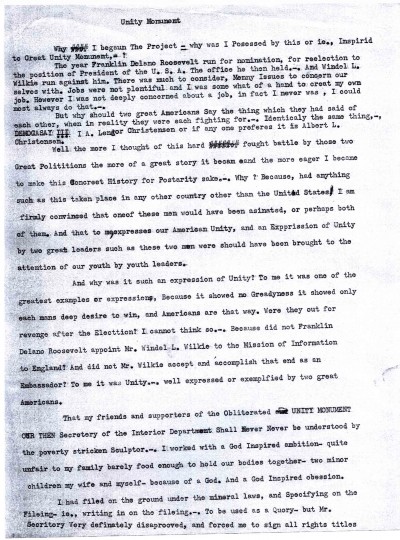
THE UNITY MONUMENT
Why I began The Project–why was I possessed by this or ie., inspired to the Great Unity Monument.
The years Franklin Delano Roosevelt ran for nomination, for re-election to the position of President of the U.S.A., the office he then held. And Windel L. Willkie ran against him. There was much to consider. Many issues to concern ourselves with. Jobs were not plentiful and I was somewhat of a hand to create my own job. However I was not deeply concerned about a job, in fact I never was, I could most always do that
But why should two great Americans say the things that they had said of each other, when in Reality they were each fighting for..Identically the same thing. I am A.L. Christensen or if anyone prefers it is Albert L. Christensen.
Well the more I thought about this hard fought battle by these two great politicians the more of a great story it became and the more eager I became to make this concrete History for Posterity sake. Why? Because had anything such as this taken place in any other country other than the United States, I am firmly convinced that one of them would have been assassinated, or perhaps both of hem. And that to express our American Unity, and an expression of Unity by two great leaders such as these two men should have been brought to the attention of our youth by youth leaders,.
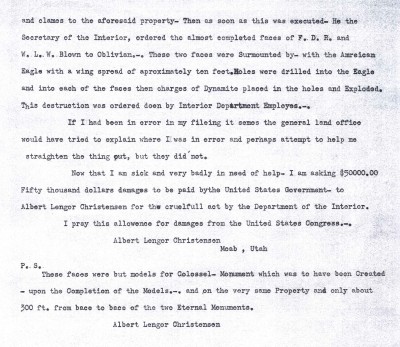
And why was it such an expression of Unity? To me it was one of the greatest examples or expressions, because it showed no Greedyness…it showed each man’s desire to win, and Americans are that way. Were they out for revenge after the election. I cannot think so. Because did not Franklin Delano Roosevelt appoint appoint Mr. Windil L Willkie to the Mission of Information to England? And did not Mr Wllkie accept and accomplish that end as an ambassador? To me it was Unity…well expressed or exemplified by two great Americans.
That my friends and supporters of the Obliterated UNITY MONUMENT our then Secretary of the Interior Department Shall never be understood by the poverty stricken sculptor. I worked with a God Inspired ambition—quite unfair to my family, barely enough food to hold our bodies together–two minor children, my wife and myself—because of a God and a God Inspired ambition.
I had filed on the ground under the mineral laws, and Specifying on the filing, To be used as a quarry–but Mr Secretary very definitely disapproved, and forced me to sign all rights titles and claims to the aforesaid property. Then as soon as this was executed, He the Secretary of the Interior, ordered the almost completed faces of FDR and W.L W Blown to Oblivion. These two faces were surmounted by, with the American Eagle with a wing spread of approximately ten feet. Holes were drilled into the eagle and into each of the faces then charges of Dynamite were placed in the holes and Exploded. This destruction was ordered and done by Interior Department employees.
If I had been in error in my filing it seems the general land office would have tried to explain where I was in error and perhaps attempt to help me straighten the thing out, but they did not.
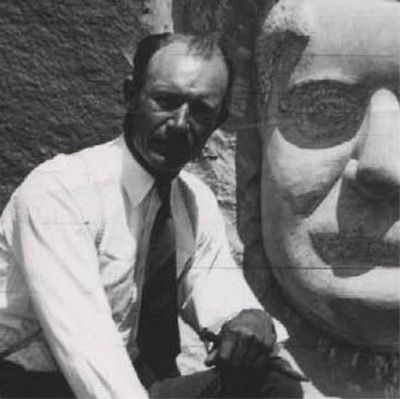
Now that I am sick and very badly in need of help. I am asking $50,000. Fifty thousand dollars damage to be paid by the United States Government. To Albert Langer Christensen for the cruelful act of the Department of the Interior.
I pray for this allowance for damage from the United States Congress.
Albert Langer Christensen…Moab, Utah
PS These faces were but models for Colossal Monument which was to be created upon the Completion of the Models, and on the same Property and only about 300 ft. from the Eternal Monuments..
Albert Langer Christensen
There is nothing to suggest he ever received a reply.
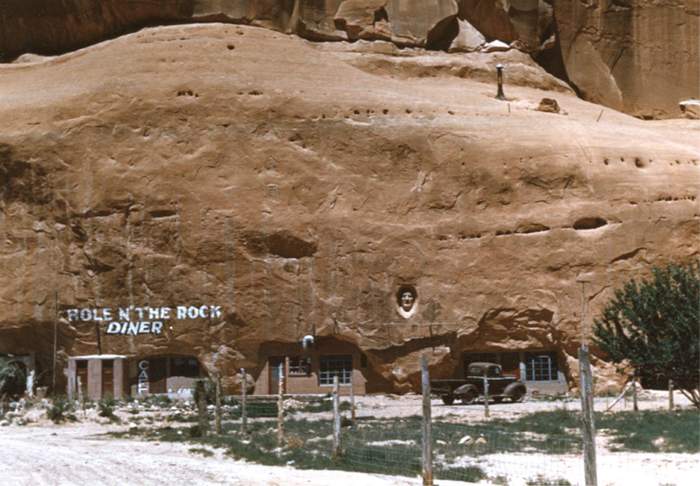
Some believe that the obliteration of the Unity Monument marked the beginning of an animosity between the federal government and longtime residents of rural Utah that exists to this day. But there is no record of any formal protest by southern Utah residents, other than Albert’s demand for compensation and Albert never attempted to revive the Unity Monument plan.
He did, however, create a lasting tribute to one of his heroes. On the sandstone cliff adjacent to Hole n’ the Rock, Albert carved a likeness of FDR that remains to this day. And up the canyon from Albert’s home, the obliterated Unity Monument can still be found. Two nubbins of rock are all that remain of the likenesses. But if you look very closely, Wendell Willkie’s right ear has somehow survived the government vandal’s chisel, dynamite, and the passage of time.
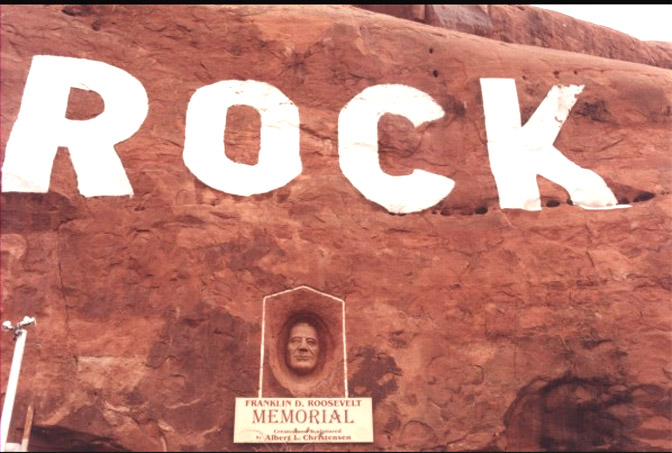
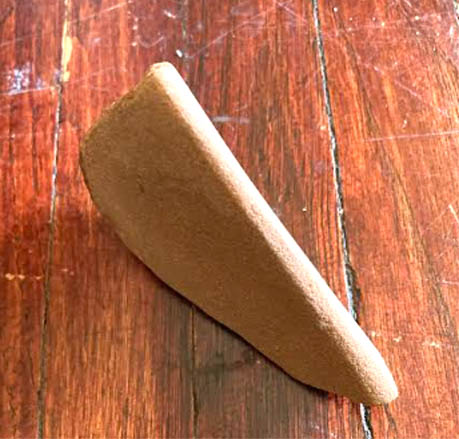
Finally, more than a decade after Christensen’s Unity model was destroyed, the Utah Highway department significantly realigned the highway and abandoned the old road. Until then, the obliterated sculpture was visible to all passers-by. The new highway is almost half a mile west of the old road. Soon, few of the new Moabites, especially those who came to Moab with the Uranium Boom, had even heard of the controversy. Out of sight. Out of mind. For years I was unaware that any trace of the original Unity model remained. Finally finding it on my own, the sight of it, even half a century later, was heartbreaking. I cannot imagine how Albert must have felt. It was easy to spot and as I sifted through the rock debris below it, I found one o Albert’s old chisels. I gave it to the Hansens who owned the Hole at the time. But I spotted something else. A piece of sandstone. Its lines were smooth and clearly sculpted. I concluded it was a small part of the Eagle’s outstretched wing. It sits with my other cherished treasures and remembrances.
One thing is certain: Albert Christensen deserved better. He died in 1957, still waiting to hear from the Interior Secretary.
*******
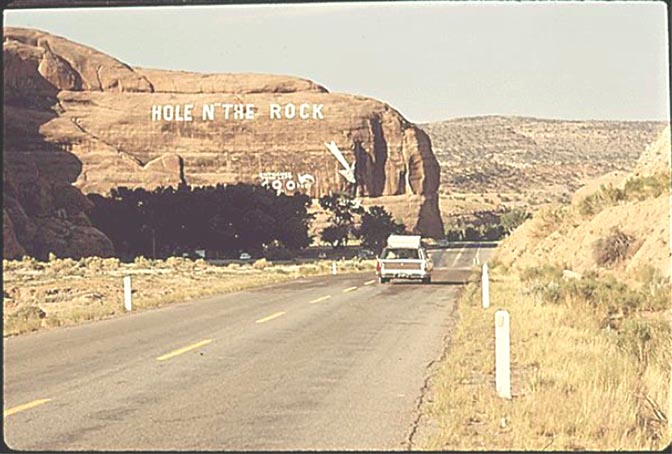
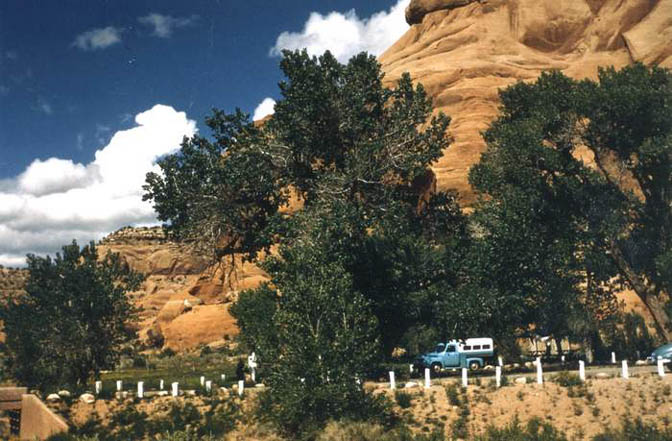
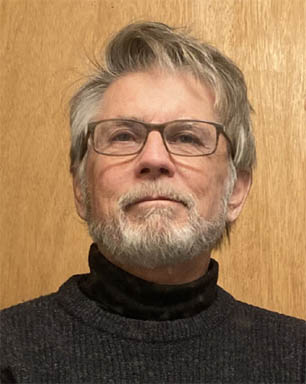
Jim Stiles is the publisher and editor of The Zephyr. Still “hopelessly clinging to the past since 1989.” Though he spent 40 years living in the canyon country of southeast Utah, Stiles now resides on the Great Plains, in a tiny farm and ranch community, Coldwater, Kansas, where there are no tourists.
He can be reached via facebook or by email: cczephyr@gmail.com
TO COMMENT ON THIS STORY, PLEASE SCROLL TO THE BOTTOM OF THIS PAGE. WE GREATLY APPRECIATE YOUR INPUT & ANY ADDITIONAL INFORMATION YOU CAN ADD TO THE STORY…THANKS—Jim Stiles


And I encourage you to “like” & “share” individual posts.
Why they can’t just leave the site alone is beyond me,
but that’s what Facebook likes to do.
ALSO NOTE: I post old photographs and stories from our 25 year old archives every day. Pictures from Herb Ringer, Edna Fridley, Charles Kreischer.. even a few old photos from my Dad. So if you want to stay caught up on our historic photo collections,
be sure to “follow” us on Facebook…Thanks…Jim
https://www.facebook.com/FansoftheCanyonCountryZephyr/
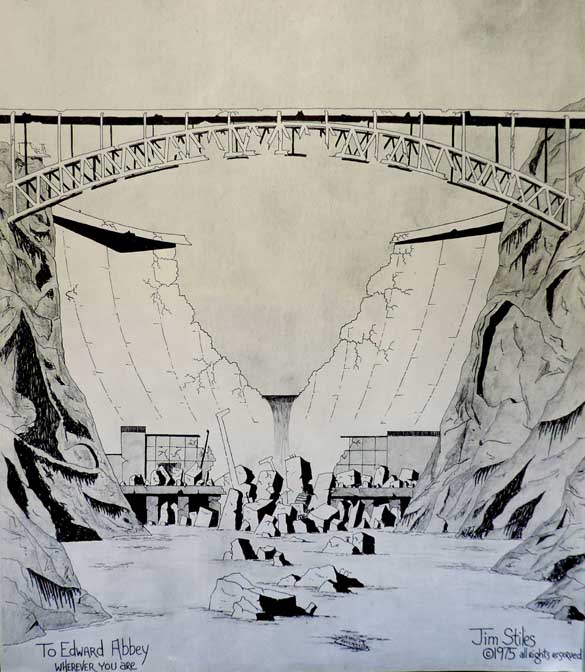
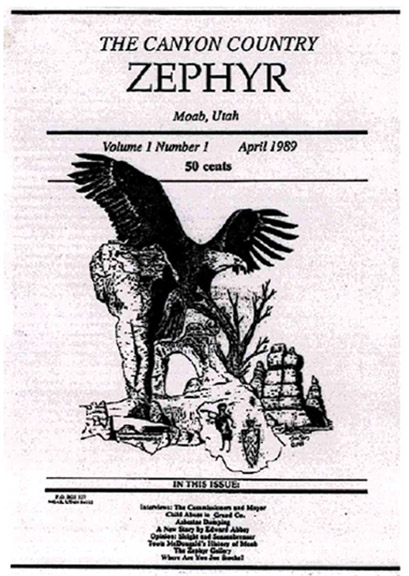
Signed copies
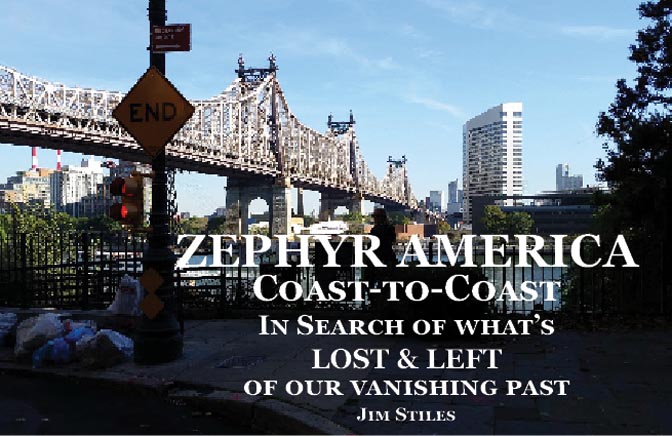
https://www.facebook.com/FansoftheCanyonCountryZephyr/
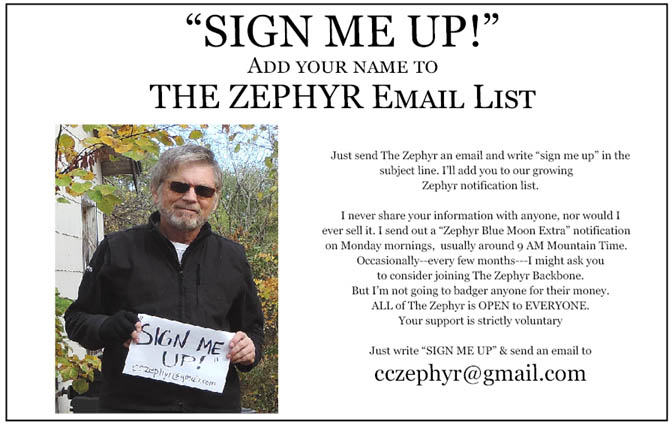
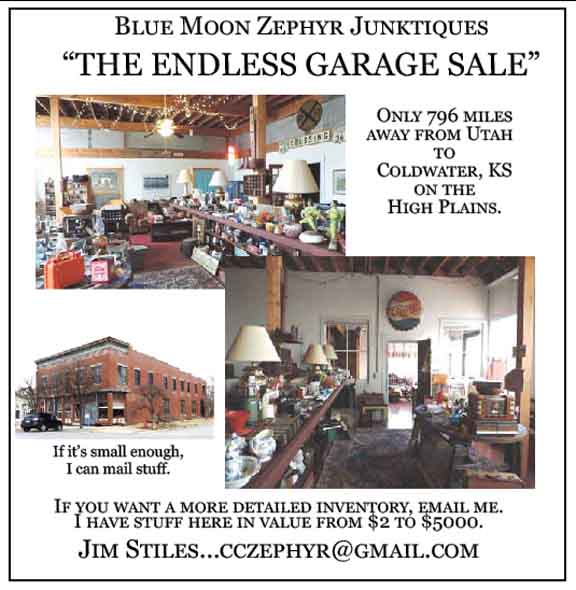
https://www.facebook.com/profile.php?id=100086441524150
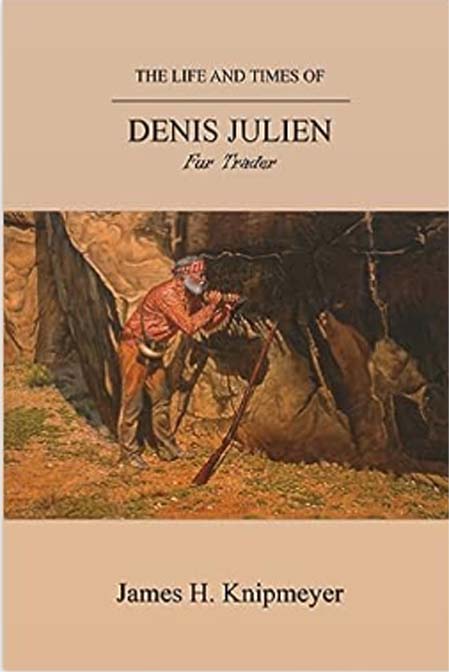
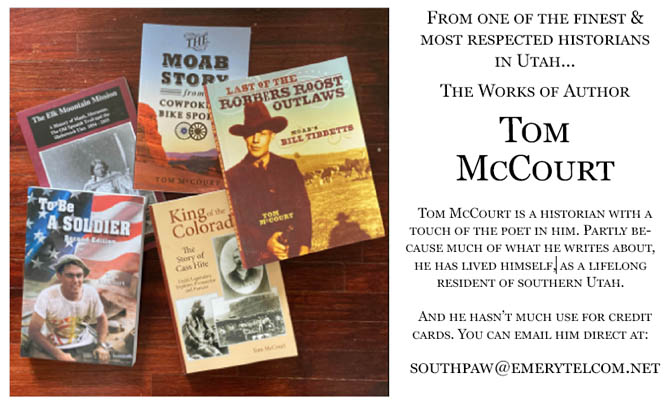
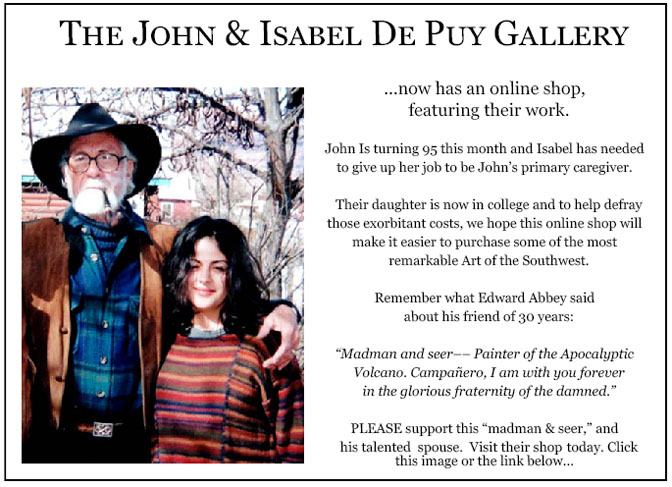
More than six years ago, The Zephyr, me & four other individuals were sued for defamation by the former Moab City Manager. Faced with mounting legal bills, my dear friends John and Isabel De Puy donated one of John’s paintings to be auctioned.
ALL the proceeds went to our defense.
Thanks to them, our bills were almost completely covered.
Now I’d like to return the favor. Check out the link below and their online shop… JS
https://www.depuygallery.com/shop.html

And check out this post about Mazza & our friend Ali Sabbah,
and the greatest of culinary honors:
https://www.saltlakemagazine.com/mazza-salt-lake-city/

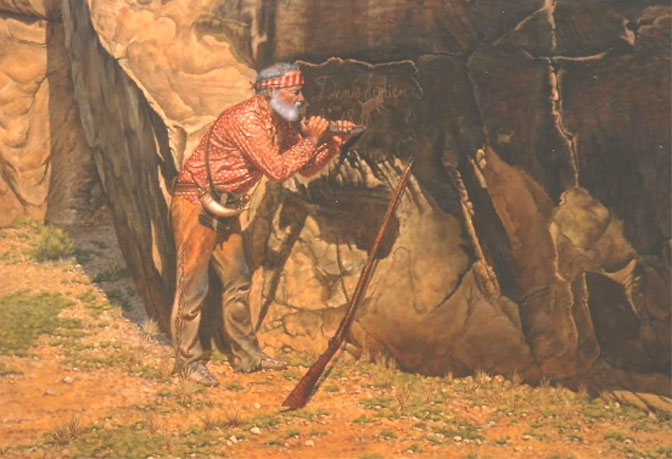
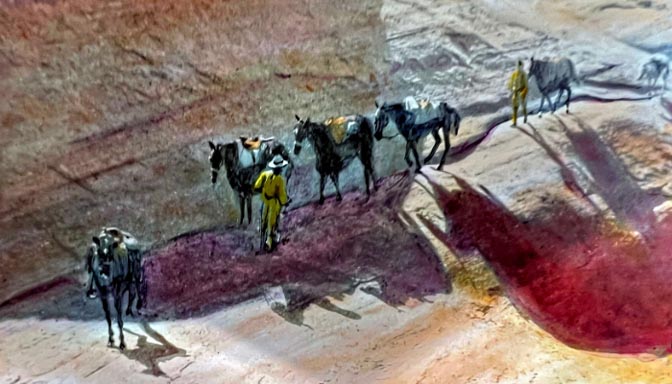
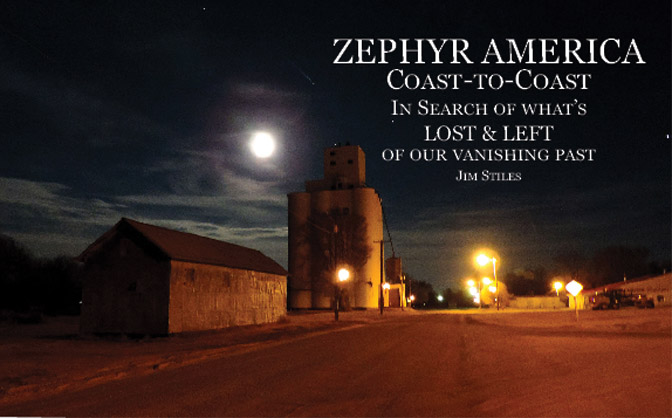
https://www.canyoncountryzephyr.com/2023/08/20/the-zephyr-america-files-volume-1-horses-sunsets-grain-silos-tucumcari-pinky-jim-stiles-zx76/
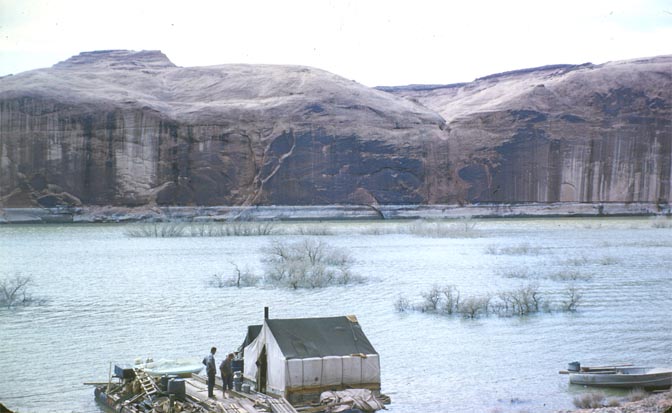
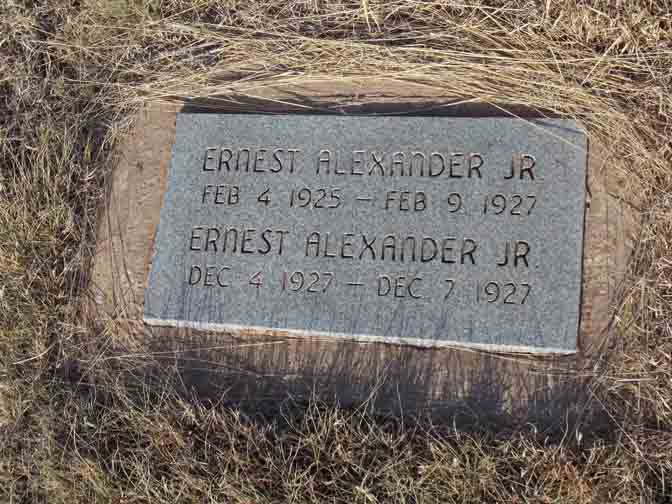
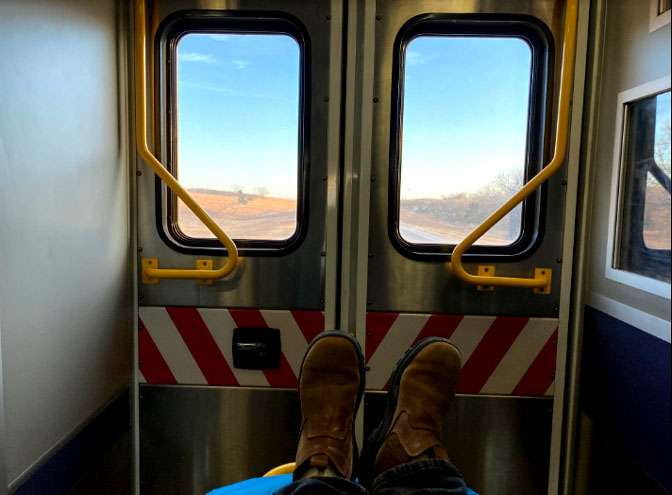
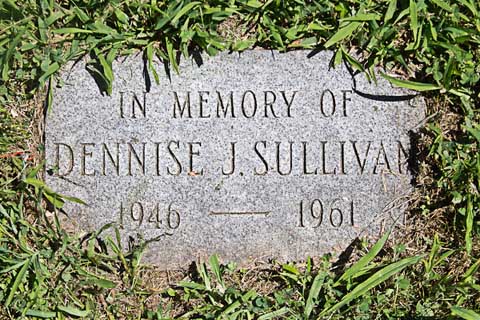

And once more, now that you’ve read the latest Zephyr Extra and waded through the ads, please take a minute to comment. Thanks for your support…. Jim Stiles

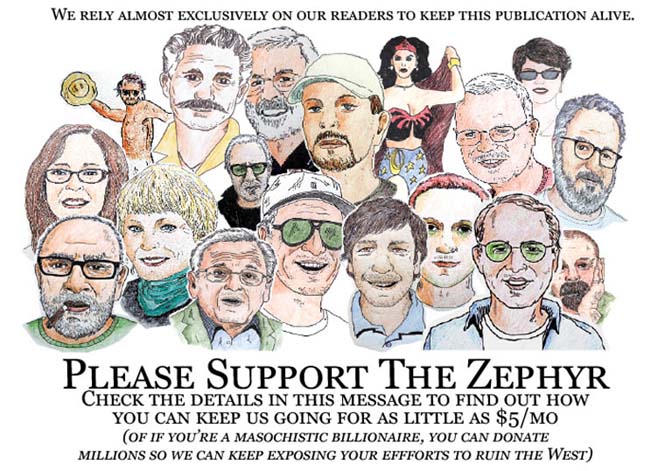
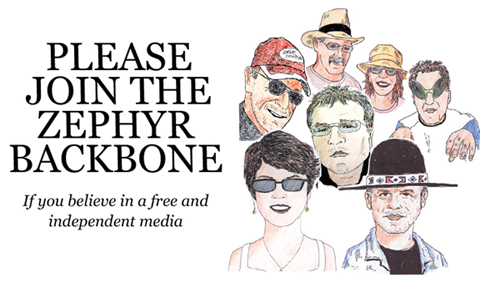
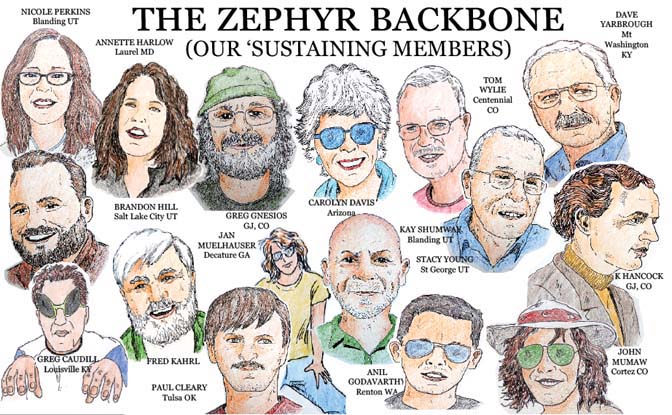
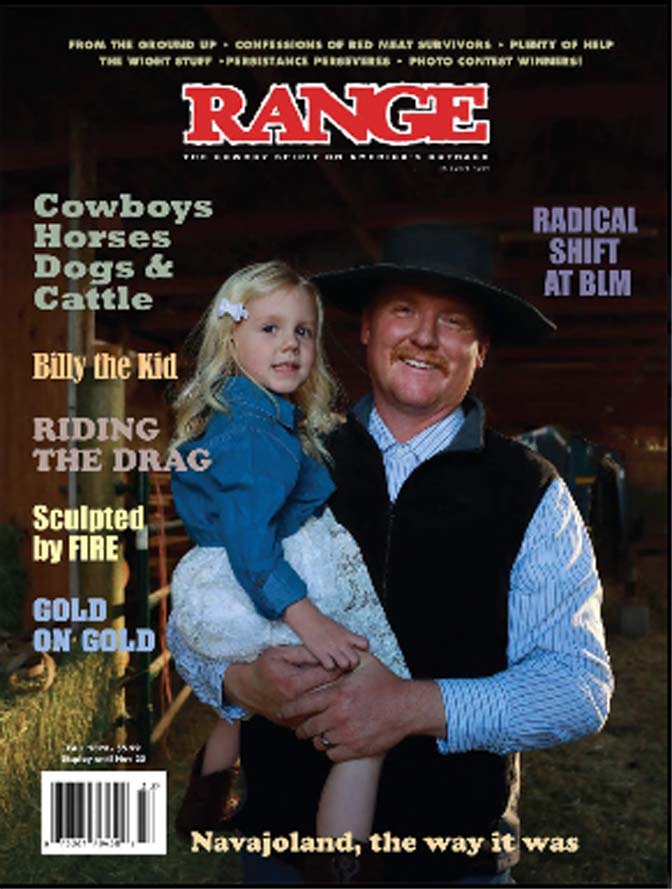
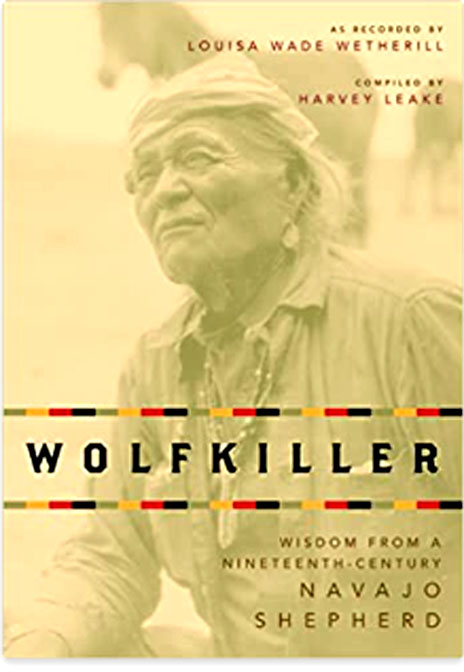
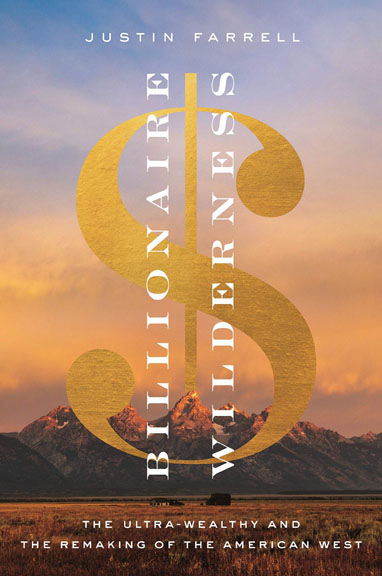

As a little girl my uncle Ray Douglas worked for the Utah Parks (might’ve been Utah Trails) in the Motor Maintenance. I remember talk about the Hole-in-the-Rock Diner! How exciting that you know the whole story!
Thanks Donna…I bet Ray had some great stories to tell…
Great story, Jim. Makes me want to look for those remnants next time I head down that road. I still have an old Canyonlands T-shirt that I bought at Hole In the Rock back in 1975. It doesn’t fit, of course, but my daughter still wears it as a pajama top.
Awesome and tragic folk-art tale. Always got a grin out of Hole’n the Rock.
Great story I just stopped by the house recently, has changed a lot since I first visited the rock home many years ago. I appreciate your added information about the creator.
Thanks Jim great history lesson!
Albert was my cousin, and his brother was a hard rock miner in Colorado, thats who initially helped begin his home and thats who taught him to blast.